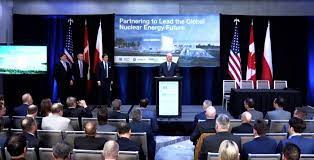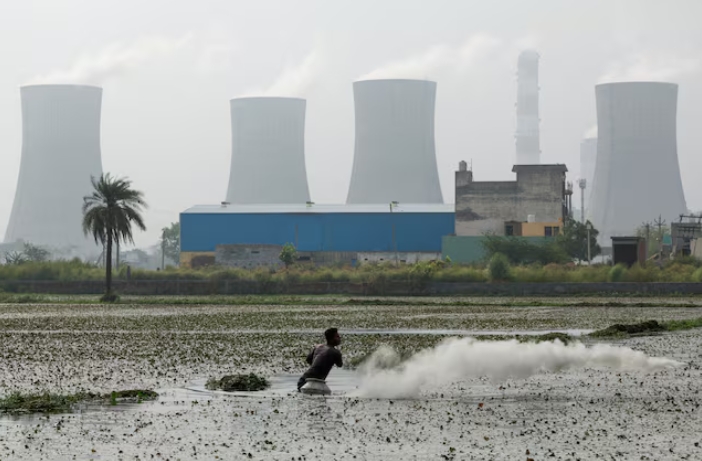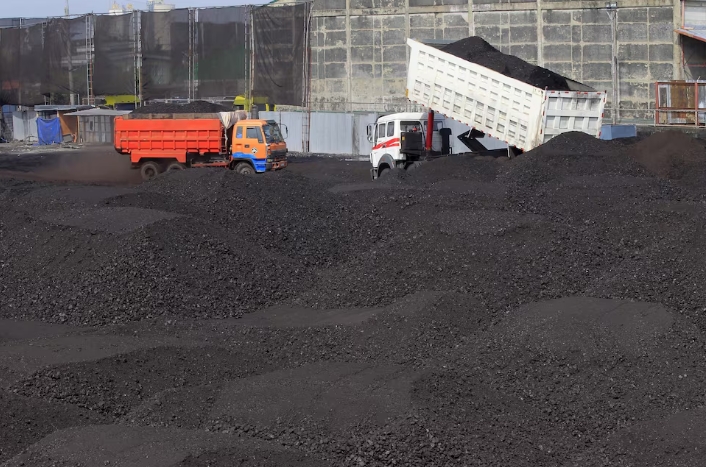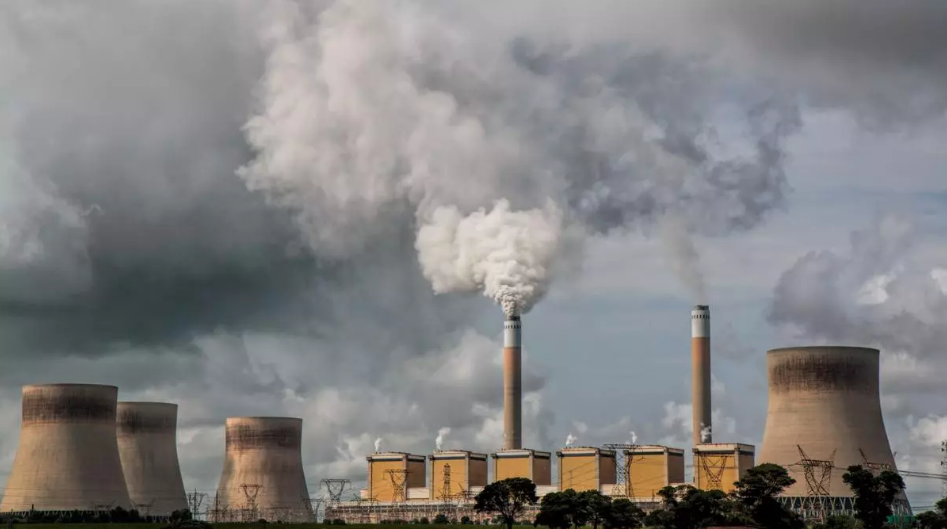
The Tennessee Valley Authority (TVA), Ontario Power Generation (OPG), and Synthos Green Energy (SGE) will collaborate to shape a standard design for GE-Hitachi Nuclear Energy’s (GEH’s) BWRX-300 small modular reactor (SMR) to speed up the technology’s regulatory acceptance and spur future deployments.
The three companies, which have separately begun a regulatory process for potential BWRX-300 project deployments in Canada, Poland, and the U.S., on March 23 signed a technology collaboration agreement (TCA) to further a standard design. A standard design is a sufficiently detailed design that could support regulatory certification or approval, and which could be used for multiple units at several sites without repeating regulatory reviews.
Under the TCA, the companies will also develop a detailed design for key BWX-300 power plant components, such as “reactor pressure vessels and internals,” GEH said. The three power companies will also form a “Design Center Working Group” whose purpose will be “ensuring the standard design is deployable in multiple jurisdictions.”
Heads of the companies during a webcast event on Thursday suggested the efforts would help demonstrate leadership to spur a new generation of reactor construction, which they said will be pivotal to secure a decarbonized energy future. The companies’ efforts were lauded by industry group the Nuclear Energy Institute (NEI), and government officials, including the U.S. Department of Energy (DOE), the Ministry of Energy for Ontario, and the Polish Embassy.
GEH Lauds Partner Confidence in BWRX-300
In a statement sent to POWER, GEH President and CEO Jay Wileman said the companies’ “unprecedented” collaboration across three countries “demonstrates confidence in the role that our SMR technology will play in helping nations meet decarbonization and energy security goals.” While GEH developed the technology using a “design-to-cost approach,” the collaboration is poised to “further strengthen the cost competitiveness of the BWRX-300,” he said.
During a panel discussion at CERAweek by S&P Global earlier this month, Wileman highlighted several BWRX-300 technology attributes that would be essential “to get around cost and certainty of outcome.” The first is “simplification, the other one is getting the right level of modularization, and the third is absolutely being able to have a common design— so that when you build here or there or wherever a vast majority of them will be the same.” That approach avoids past mistakes, he suggested. “That’s a sin we had in the past in our Gen II [fleet] that we cannot afford to repeat going forward.”
GEH has said the BWRX-300—the 10th evolution of GE’s boiling water reactor (BWR) technology—already represents “the simplest, yet most innovative BWR design since GE began developing nuclear reactors in 1955.” The design is based on the Gen III+ 1,520-MW ESBWR, which the U.S. Nuclear Regulatory Commission (NRC) certified in 2014.
So far, GEH’s first BWRX-300 deployment is slated to be at OPG’s Darlington New Nuclear Project (DNNP) in Clarington, Ontario. GEH expects construction of the Darlington SMR to be completed by “late 2028.” OPG submitted an application for a license to construct the pioneering SMR plant to the Canadian Nuclear Safety Commission (CNSC) in October 2022.
In February, notably, OPG and GEH announced a partnership with a consortium comprising Canadian nuclear firms SNC-Lavalin and Aecon to bolster the plant’s deployment. As POWER has reported, the companies’ alliance agreement is the first of its kind for a grid-scale SMR in North America. It represents a deliberate effort to tackle construction complexities, potential delays, and cost overruns associated with the new build, which could become one of the first commercial SMR projects built in Canada and the U.S.
Last week, meanwhile, GEH announced its BWRX-300 design cleared the first two phases of the CNSC Vendor Design Review (VDR) process, marking a first for an SMR. GEH, notably, in December 2022 also formally submitted a Generic Design Assessment (GDA) to UK regulators.
TVA, meanwhile, in August 2022 signed an agreement with GEH to begin planning and preliminary licensing at the NRC for the potential deployment of a BWRX-300 at the Clinch River site near Oak Ridge, Tennessee. On Thursday, the company said it was also exploring additional sites in the TVA service area for potential SMR deployments.
TVA’s licensing interest, notably, in September 2022 kicked off a collaborative effort between the CNSC and NRC to jointly address regulatory and safety issues in the licensing review of the BWRX-300 SMR design.
Regulatory progress for a BWRX-300 is meanwhile also underway in Poland. ORLEN Synthos Green Energy (OSGE), a joint venture that holds exclusive rights for BWRX-300 deployment in Poland, has so far applied to the National Atomic Energy Agency for a “general opinion” of the SMR technology. On Thursday, OSGE noted it had so far “initiated a site selection process for its proposed first BWRX-300 and intends to deploy this first unit by the end of this decade with the future potential for a fleet of BWRX-300s.”
GEH’s other near-term prospects for the BWRX-300 include projects in Canada and Estonia. In February, Fermi Energia, a privately held company formed to develop an SMR in Estonia, announced that it has selected the design for deployment. And in June 2022, Saskatchewan provincial utility SaskPower chose the BWRX-300 for the province’s first two nuclear units, which the provincial utility plans to deploy by the mid-2030s.
Joining Forces to Address Challenges Ahead
On Thursday, TVA CEO and President Jeff Lyash, suggested the utility’s “extensive experience and expertise” building and operating nuclear facilities—including BWRs—uniquely positioned it to “help lead this effort moving forward.” That’s important “because what we have here is a technology with 50 years of operating experience behind it. That rests on a supply chain that we largely brought into existence and maintained,” he said.
Lyash, however, acknowledged challenges lay ahead. “The challenge for us is not just developing this next evolution of technology. The big challenge is workforce, supply chain, delivery model. So what today’s about is certainly signing a historic agreement to develop the standard design, but what it’s really about is partnership and leadership.”
Dr. Kathryn Huff, assistant secretary of the U.S. Department of Energy (DOE) Office of Nuclear Energy, during the event highlighted the private investment effort’s key goal—“deploy, deploy, deploy”—underscoring its potential to “lift off nuclear reactors to a scale we need to meet our climate change goals.”




